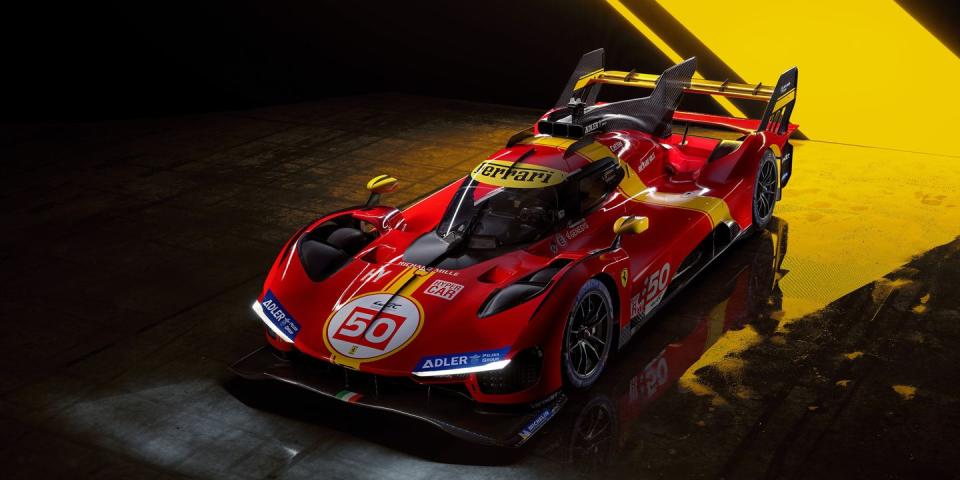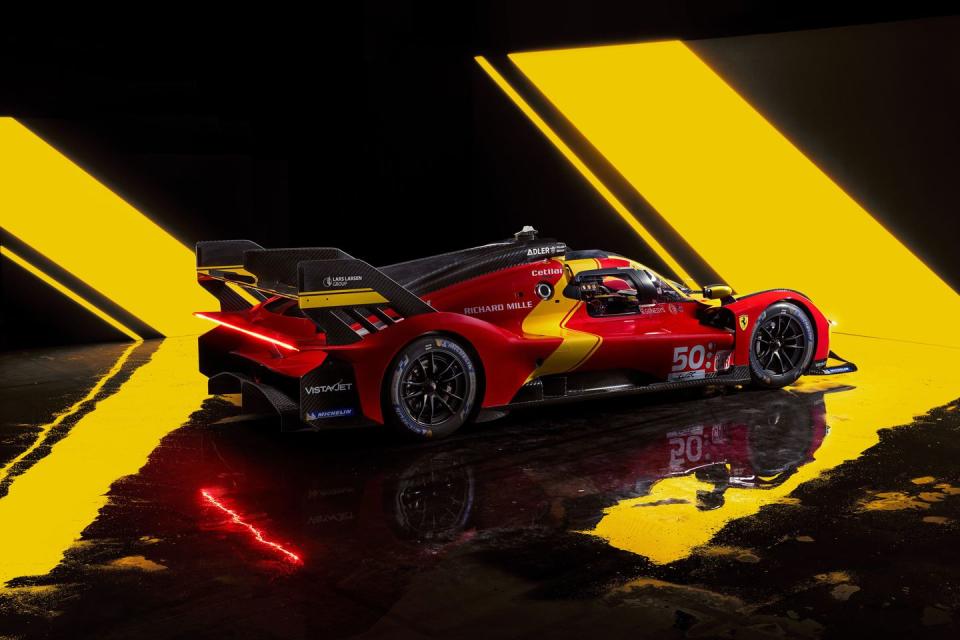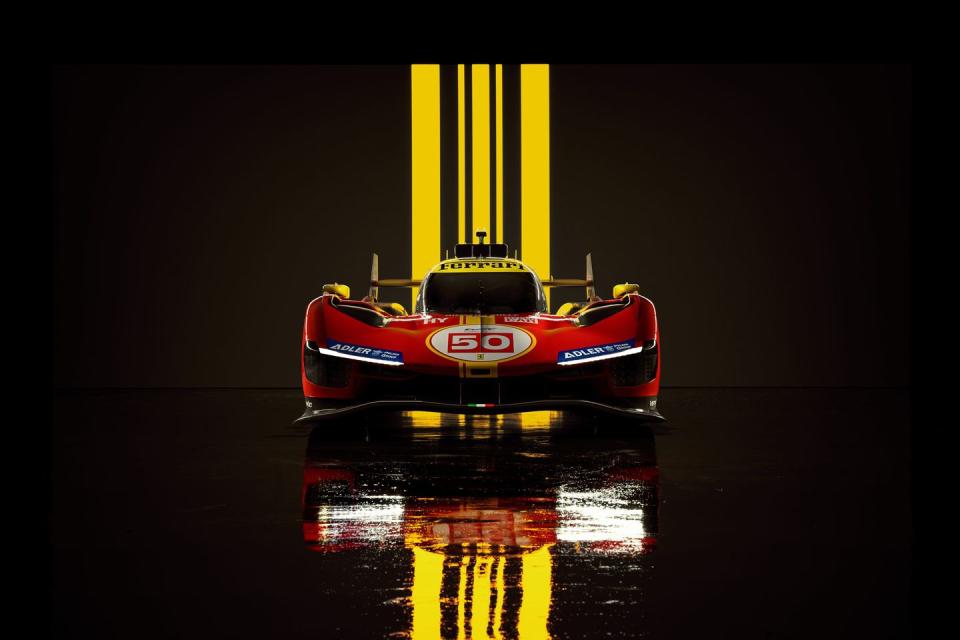Virtual Walk Around of Ferrari’s Fabulous 499P with Bob and Bill Riley

When the Ferrari 499P arrives at Sebring for the opening round of the World Endurance Championship, it will be the debut race weekend for the Scuderia’s first factory prototype in 50 years. (Ferrari considers its 333 SP to have been a customer car.)
To provide some insight into what is arguably the most elegant, sleek new Hypercar, we asked car designers Bob and Bill Riley of Riley Technologies to do a virtual walk around of the 499P. The key element to remember is that the BoP rules require all cars, including those running to LMDh rules, to fall within a 4:1 ratio of downforce to drag.

Bill Riley—The Hypercars are so interesting because you can start with a clean sheet aerodynamically with all the tools of Computational Fluid Design (CFD). You just have to get the cars within the performance windows that they are requiring for BoP.
Everybody has been using CFD for the top of the body or fixed wing designs. For the past 25 years, the undersides of the car were dictated by the rules. Whether it was Peugeot and Audi, the battles they had, the underside of all the cars was to a rulebook. Now, for the first time since Group C and (the original) GTP, there’s no rules for the Hypercar for the underside of the car and they’re taking CFD to the optimum level.
There’s always the internal battle between the car designer department and the aerodynamicist department. I assume Ferrari is more interested in how the car looks in victory lane at Le Mans and they’re probably looking at it more from the aerodynamic point of view.

Side Profile, Sidepods
The sidepod treatment often gives a car one of its visual distinctions and that’s certainly true for the 499P. The relatively low sidepods form a continuous line from the front to the rear fenders, which have standard size wheel arches.
Bob Riley—Typically, the top edge of the sidepod is sharp. It’s good for downforce in yaw when you have that sharp edge on the top. On the bottom, right between the floor and the top of the sidepod, it’s rounded, so the air coming from the top of the car curls down around the bottom area and should give you some negative pressure, or in other words downforce.
Bill Riley—Obviously, there’s a lot of CFD there. The shape of the sidepod is intended to help the ground effects.
Bob Riley—The rounded corner lets the air flow more underneath the car. And the faster you can get the air to flow underneath the car up to a point, of course, the more negative pressure you get and the more downforce.
Bill Riley—At the very rear of the car, behind the rear tire, there’s a piece of carbon fiber. The body goes red for about four inches and then there’s a black piece of carbon fiber, like a sail. That’s pretty good drag reduction and downforce. They probably played with that a lot to help it extract air from underneath and to reduce side body drag. That was a big tuning type of thing on the Daytona Prototypes. You would always see that panel bolted onto the side of the cars.

Rear, Wings
Unlike the Peugeot, which describes its 9x8 as not having a rear wing, or the Toyota GR010, which has its wing mounted on central struts, the Ferrari has an entirely different approach with an upper dual element wing and an additional lower wing.
Bob Riley—The rear wing endplates are bigger than normal. It’s just like a land speed record car. You have to have the wind blowing on the side of the car so the nose will point into the wind. It’s kind of a stability asset. The slots on the end plates, which are common to many cars, reduces the turbulence that comes off the endplates and at high speed they reduce the drag.
Bill Riley—The rear wing has three fins and they’re all fairly large. It’s kind of like Bob said. It could be like the feathers on an arrow to keep the car straight. That might be able to open up things on corner entry, where you use more aero on corner entry to stabilize the rear where you don’t have to compromise the set-up. Almost all race cars are loose into the corner, understeer in the middle and are loose out. It looks like they’re trying to help that loose in so you can work more on the understeer in the center of the corner.
Bob Riley—The top wing is a long dual element wing with narrow cords. The aspect ratio, when it’s like this, gives you less induced drag, the technical word for it. That’s the reason for the long wing with narrow cords.
The lower wing is probably used to adjust downforce. In other words, you usually can angle a rear wing up a bit at that level and actually get more air to flow through the bottom of the car.
The exit of the undertray is interesting. Usually, the undertray has dividers coming down to separate the air. This open approach looks nice and when you have dividers, that’s some drag.
Bill Riley—At the end of the Group C era, we started running two sets of wings. That lower wing helps extract air from underneath the tunnels, almost extending the tunnels in a way, using the (lower) wing to pull more air from underneath. It’s nice to see that design being used again with large ground effects tunnels.


 Yahoo Autos
Yahoo Autos 